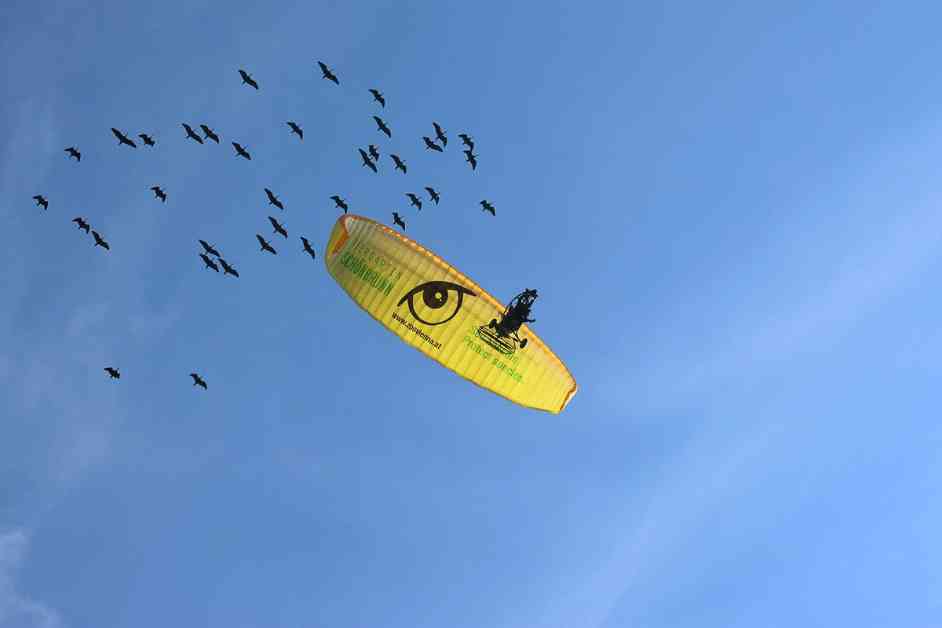Parenting a flock of Northern Bald Ibises is no easy task. Over the last six months, biologists Barbara Steininger and Helena Wehner have dedicated themselves to hand-feeding and nurturing dozens of endangered chicks. They had to be there for the birds every day so that the young ibises would imprint on them and only them.
Once the birds were ready, Steininger and Wehner took to the skies to lead their young charges on their first migration. In mid-August, they boarded a microlight aircraft in Rosegg, Austria, embarking on a 2,800-kilometer journey that concluded on October 3 in Andalusia, Spain, where they bid farewell to the birds they had raised.
The Northern Bald Ibises have a natural instinct to migrate when the weather turns cold, seeking warmer climates for the winter. However, due to habitat loss and hunting, the birds have lost their knowledge of migration routes. This loss of migration ability poses a threat to their survival, as migrating allows birds to access more food sources and increase their reproductive success.
To ensure the survival of the Northern Bald Ibises, Johannes Fritz and his team have taken on the task of teaching the young birds the migration route. Inspired by the movie “Fly Away Home,” the team uses a microlight aircraft to guide the birds on their journey. The process is resource-intensive but has shown promising results in helping the birds migrate successfully.
This year, the team shepherded the largest group of juvenile Northern Bald Ibises, with 36 birds making the journey to Andalusia. While not all birds were able to complete the migration on their own, the team transported them to ensure they reach their destination. These birds will spend the winter in the wild and hopefully migrate back to the Alps in the spring to breed.
The reintroduction efforts have shown positive results, with the wild migratory population growing over the years. However, until the population reaches a sustainable level, continued human intervention is necessary. Monitoring the birds with GPS tags allows conservationists to track their movements and manage the population effectively.
As climate change alters migration patterns and habitats, human-led migration efforts like the one led by Fritz’s team may become more crucial in ensuring the survival of endangered species. With the success of programs like these, there is hope for the conservation of other declining populations facing extinction.
In the face of human-induced threats and climate change, it is essential to take action to protect and preserve endangered species like the Northern Bald Ibis. The dedication and hard work of conservationists and scientists play a vital role in ensuring the survival of these iconic birds for future generations to come.










